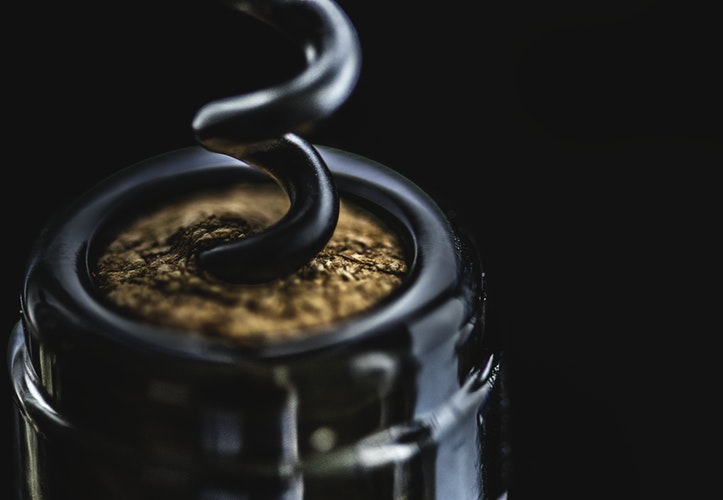
A Beginner's Guide to the Art of Blind Tasting
Blind tasting is one of the most difficult yet rewarding processes as a wine student, and plays an integral part of every nearly top level wine qualification in the world. Often misunderstood, blind tasting doesn't literally mean tasting a wine without being able to see it, but tasting a wine with no idea of provenance, grape varieties, vintage or any evidence really other than the liquid in front of you. Whether you want to become a Master of Wine, a Master Sommelier or any of the levels below these two qualifications, blind tasting is likely to be a very important part of both your training and, eventual examinations.
We thought it would be useful to detail some tips and hints on how to become a better blind taster, and how to integrate the process with your own exploration of the world of wine, but first it pays to look at why we do it. So, why is blind tasting regarded as such an important element of wine education? When you work in the wine trade, you're not choosing wines for your restaurant, bar or shop due to blind assessments; context is as important as flavour and quality when choosing wines to sell. If you're a wine writer, you're almost never tasting blind as you're trying to tell the story of the wine, which is supremely hard to do if you don't know more about it. Even for personal pleasure, most of us want to connect what we know about the bottle to what we taste on the palate, so blind tasting at home is a rare occurrence for anyone who isn't coming up to exams! So, why bother at all?
Simply put, it makes you a better taster. Even if you never use blind tasting as an individual process in your career thereafter, if you know wine well enough that you can deconstruct it and put the pieces back together in a logical order, you're on a good path. Blind tasting forces you to pay very close attention, getting used to analysing what's in the glass rather than what's in your head. These skills can then be applied to tasting more generally, and it's been our own experience that the better we get at blind tasting, the better we get at tasting overall!
With that being said, let's have a look at some top tips and tricks to incorporate into your own blind tasting!

Appearance
When we first started blind tasting, we focus a great deal on the appearance. We're not saying don't check it, but it certainly shouldn't be the most important element of your analysis. There are some things you can learn from the appearance of a wine, but most things can be checked with far greater accuracy on the nose or the palate. The main thing worth noting about a wine is it's colour and intensity!
Colour – This is easily the most important visual aspect of a wine. Certain grapes tend to have quite distinctive colours, and can often give clues as to their origins, wine-making and age.
For red wines - As the pigmentation that defines the colour of red wines is found in the grape skins, different colours can often suggest different grape varieties. Lighter ruby colours often suggest wines made from Nebbiolo, Pinot Noir, Grenache, Corvina and Sangiovese. Darker colours suggest grape varieties with thicker skins and more pigment, such as Malbec, Cabernet Sauvignon, Carmenere, Nero d'Avola and Syrah.
With Age - Red wines tend to lose colour as they get older, getting lighter from the rim of the glass towards the centre. Eventually most bright ruby colours will get closer to garnet in style and hints of orange will creep in. Very old wines can be a completely different colour than how they started!
For white wines - As most white wines aren't made with extended skin contact, colour is less relevant to the variety and more so for the wine-making and age. Most young, unoaked wines will be pale in colour across the spectrum, whilst wines that have had oak contact or are older will usually be deeper in colour. This is because as white wines get exposed to oxygen, either through porous oak barrels or through the cork, the colour deepens; completely the opposite to the effect of age on red wine!
With Age - As mentioned, white wines tend to get darker in colour with age but this can really go full circle. From a pale, lemony colour through to gold, amber and eventually, brown! Very old white wines can be virtually the same colour as very old red wines!

On the Nose
Your nose is your single most important tool in tasting; use it well! This is where you really start to gather your clues as to what the wine might potentially be. Things to look out for and make a note of:
Fruit Profile - In the case of red wines, this is usually a distinction between red and black fruits. Does the wine smell bright and red-fruited, like fresh strawberries? Is it juicier and darker, like a ripe plum? For white wines, these aromas can run the scale from tart, green apples all the way up to tropical fruits like pineapple and mango.
Floral/Herbal/Mineral Aromas - It's a rare wine that only smells of fruit. Any herbal aromas? The sappy nature of Tempranillo, the dry Oregano character of Sangiovese, the spicy bell pepper aromas of Cabernet Franc? Then onto floral aromas and an wide array, from the exotic rose petal aromas of Gewurztraminer, the crushed white flowers of Viognier and the dried violets of older Nebbiolo. How about mineral aromas? The kerosene aroma of maturing Riesling, the piercing, chalky character of Chablis or the dark, smoky intensity of Priorat. Make note of whatever you're smelling that isn't fruit!
Wine-making - Part of the profile of a wine comes from the grape varieties, climate and soil from where it hails, but a big part is also played by human intervention in the winery. These are commonly known as 'Secondary' aromas and are essentially anything that we've changed, added or subtracted during the process of making wine. The most common are:
Oak – Oak can be used as a fermentation vessel, an ageing vessel or both. It can be added in the form of barrel ageing, oak chips or even oak powder (bleh!) with different impacts on the final flavour and texture of a wine. Regardless of whether it's red or white, oak aged wines tend to have distinctive aromas of toast, vanilla, baking spices, cloves and/or pepper. Depending on how new the oak is (the newer, the more pronounced these effects), whether it's American or French (American oak is 'sweeter' and more aromatic) and how long the wine spends in contact with it, defines the sort of profile that oak imparts onto the wine. There's an enormous difference between a Syrah aged in large, old oak barrels in the Northern Rhone and a Syrah aged in new, American oak barrels in The Barossa Valley!
Lees ageing – Once a white wine has been fermented, the wine-maker has a choice to remove all the particles immediately and look towards ageing and/or bottling, or leave the wine to rest for a period of time, with the small yeast cells slowly falling towards the bottom. This latter option is known as the 'lees' or 'lees ageing' and involves leaving the wine anywhere from 2 months to 3 years in contact with these deposits. For a really pronounced savoury, yeasty character, the wines can undergo Bâtonnage, where the yeast cells are intentionally stirred up to accelerate the process. Particularly relevant for white wines, lees ageing can promote aromas such as toast (easily confused with oak ageing!), yeast, brioche and broken biscuits.
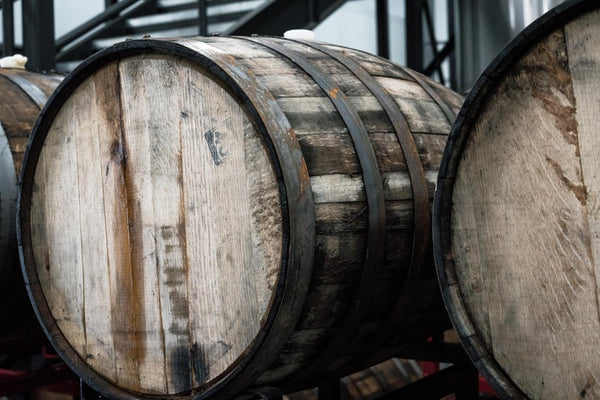
Malolactic Fermentation – Ever tried a supple, buttery Chardonnay? The reason it has this character is due to a wine-making process known as malolactic fermentation, which usually occurs right after the alcoholic fermentation. Bacteria break down malic acid (the sort of acid you find in green apples) in the grapes and convert them into lactic acid (the sort of acid you find in dairy products), making the character of the wine softer and creamier. Other chemicals are produced in the process, including diacetyl, which smells and tastes quite a lot like butter! Wine-makers can choose to suppress this process, so whether or not it's present in white wines is a strong clue. Pretty much all red wine undergoes malolactic fermentation, by comparison, so no need to note it.
Right, so by this stage you should have a pretty solid impression of the flavour profile of the wine. All wines have some sort of fruit character to them, with the exception of incredibly old wines, and most will have some sort of wine-making impact and often another primary characteristic, whether it be herbal, floral or mineral. Once you have these details, it's time to move onto the structure of the wine, which we assess on the palate.
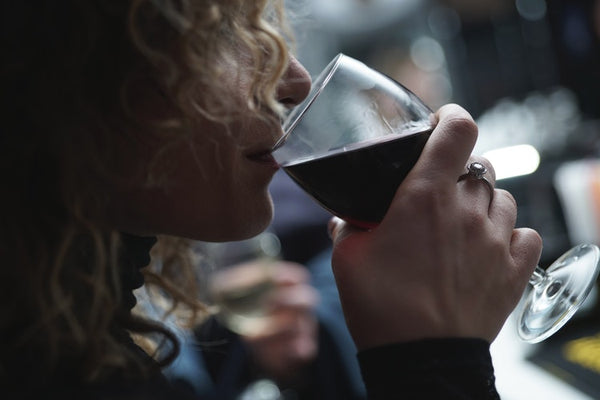
On the Palate
The concept of 'wine tasting' is a little misleading, as truthfully most of the flavour analysis is done by your nose. When you taste a flavour, it's actually your nose doing most of the work via something called the 'olfactory bulb', so in terms of flavour profiles, stick to your nose! However, when it comes to alcohol, acidity, tannins and texture, this is where your palate really comes into play. Whilst most of the work has already been done by the nose, textural components are arguably the most important when it comes to the process of identification. Let's have a look at these 4 different components:
Alcohol – Like it or not, alcohol is an intrinsic element of wine. Not just responsible for alcoholic inebriation and feelings of happiness, alcohol supplies a lot of the flavour and texture in wine, which is why more alcoholic, powerful wines often have a heavier, softer feel in the mouth. Learning how to detect alcohol is very much a personal experience, but the physical weight is a good indication, as is detecting a warming sensation in your mouth and throat when tasting/swallowing. Wines particularly high in alcohol will also often have a slightly sweet character to the fruit profile, which is due to glycerol production, a flavourless alcohol with a sweet sensation. Tricky to determine, but a big part of finding your way to the right conclusion! If you're blind tasting, start practicing guessing the exact alcohol in the wine and you'll find yourself improving in no time.
Acidity – Hugh Johnson said it best, when he claimed that acidity was the 'nervous system' of a wine. Acidity makes a wine refreshing, balances alcohol and strong flavour components and keeps us coming back for me. Detecting acidity can be tough as it also changes depending on other elements of the wine, but there's a particular test that we've found to be useful. It's known, quite appropriately, as the 'dribble test'.
So, you'll have to trust us a little on this one! Take a sip of water and swirl it around your mouth, before swallowing it. Once your mouth is dry, look towards the ground and slightly open your mouth. You'll probably find that gravity will eventually grab whatever fluid you might have and start to drag it down, but it should be a relatively slow process. Try exactly the same exercise but with a glass of wine. You'll find that, this time, you start salivating far more quickly and with very fresh wines, you'll be in danger of accidentally drooling in the ground!
Not the most pleasant of tests, but an objective one and one that we've found particularly useful in our own analysis. The faster and more profusely you start to salivate, the more acidity, or lower the PH, the wine has. Get practicing!
Tannins – Tannins are mostly associated with red wines and for the purpose of blind tasting, don't worry about tannic grip when tasting white wines. Tannins are structural components of wine, found in the skin and pips of the grape, hence why they're far more common in red wines. They give body and texture to a wine, and in certain cases give red wine that mouth-drying sensation, as the tannins quite literally inhibit saliva production.
Detecting and analysing tannins is perhaps the most difficult element of blind tasting, and requires a lot of practice. As a general rule, if you swish a red wine around your mouth, you'll start to feel them. Often, they stick to the front of your teeth, sometimes only inside your mouth and can occasionally be silky and soft. The structure of tannins give strong clues as to the varietal origins of grape varieties, so it pays to get good at identifying the style. Warmer climates tend to give softer, riper tannins whilst cooler climates are often firmer and more pronounced.
Texture – In red wines, texture is mostly related to the tannic structure and alcohol, although high levels of acidity can also contribute a certain edge to a wine, particularly in the case of Nebbiolo and Sangiovese. In the case of white wines, lees ageing, malolactic fermentation and oak usage change not only the flavour profile, but the texture quite dramatically. From crisp, cool acidity to a softer, riper texture? Malolactic fermentation. Lees ageing can add a richness to the mid-palate, which can make a wine feel heavier than it actually is, whilst oak can add layers of flavour which sit more heavily on the palate. Learning to define texture, like tannins, is difficult but will ultimately lead you to a more accurate conclusion. Beautifully textured wines, red or white, are a thing of great beauty!
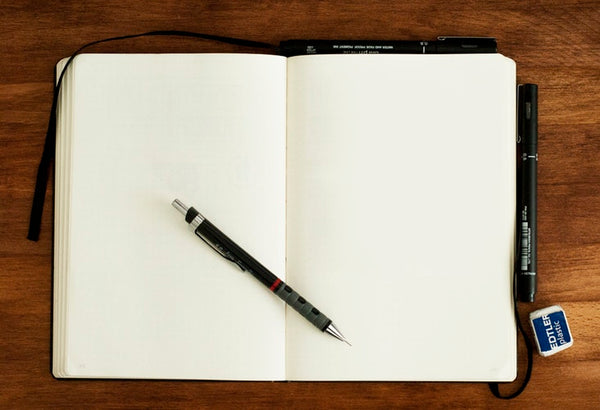
Analysis and Conclusions
So, you've analysed the wine. You've looked at the colour and noted it. You've gotten to know the wine and noted the relevant details, including the profile of its fruit aromas, it's herbal, floral and/or mineral aromas. You're confident on the levels of acidity, alcohol, tannins and the sort of texture the wine has. You've had a good educated guess at how the wine has been made and now you're ready to have a go at identifying the wine. Did you think the tasting was tough? It's the easiest part. Far more difficult is trying to put those pieces of evidence together and figure out exactly where it came from!
This is the part that takes the most amount of experience, practice and studying. When you understand a region well, you start to understand the reason that the wines taste the way that they do. The climate, the soil, the viticulture, the wine-making, the grape varieties and other relevant stipulations. All of it goes into the bottle and makes Chianti taste different from Brunello, the Mosel from the Pfalz and Rioja from Ribera del Duero. Whilst this takes years to master, here are some basic tips to get started:
Fruit Profile - A common mistake is to smell black fruit and immediately think of a warm climate. Don't. Instead look at the nature of the fruit. Is it fresh strawberries, slightly dried strawberries or strawberry jam? Is it green apples, melon fruit or exotic, tropical fruits? In both case, the climate changes the profile of the fruit profile drastically. Cooler climates tends towards cooler fruit aromas; fresh red and black fruited aromas for red wines, green and citrus aromas for whites. As it gets hotter, these aromas get riper and in the case of white wines, often even become tropical. Really ripe, forward fruit flavours usually suggest a warmer climate with a good amount of sunshine!
Structure - Like the fruit profile, the structure of a wine tends to give away a lot of clues as to its origins. High levels of acidity can either mean that the grape has a high, natural level of acidity, but more commonly suggests that the wine has been grown in a cooler climate. Alcohol levels work in the opposite way, with lower levels of alcohol common in cooler climates and higher levels more likely in much warmer climates. Tannins are generally softer and riper in warm climates, and firmer, occasionally with a touch of bitterness in very cool climates. Deciding whether these factors are related to the grape, wine-making or terroir is down to experience more than anything else, but if you get used to analysing the structure of a wine, you're already on your way to being a fantastic blind taster.
Putting it Together - At some point, you have to come to a conclusion about the wine you think it is. Using the evidence you've gathered from tasting and your logical conclusion, you hazard an educated guess, roll the dice and hope for the best. The most important element of this isn't getting it right, it's that your process was accurate; a combination of good tasting skills and good theoretical knowledge will mostly bring you to the right conclusion, or at least in the right style of wine! Then, reveal the wine.
Did you get it right? If so, why? If not, why? Blind tasting isn't a game of getting it right or wrong, it's a process of understanding why wine tastes the way that it does. If you got it right, fantastic! Go again. If you got it wrong? Figure out where you went wrong, then go again. The more you taste, the better you get.
We hope this guide was useful in getting you started with blind tasting! It might sound complicated at first but once you get started, the pieces all start feeling into place. For a more comprehensive guide, The Concise Guide to Blind Tasting by Neel Burton is a fantastic book and a must-read for any wine student. Good luck with your future blind tastings and as always, happy drinking!
For more on our specially designed wine luggage and more detailed information on how to travel with alcohol, check out the links below:





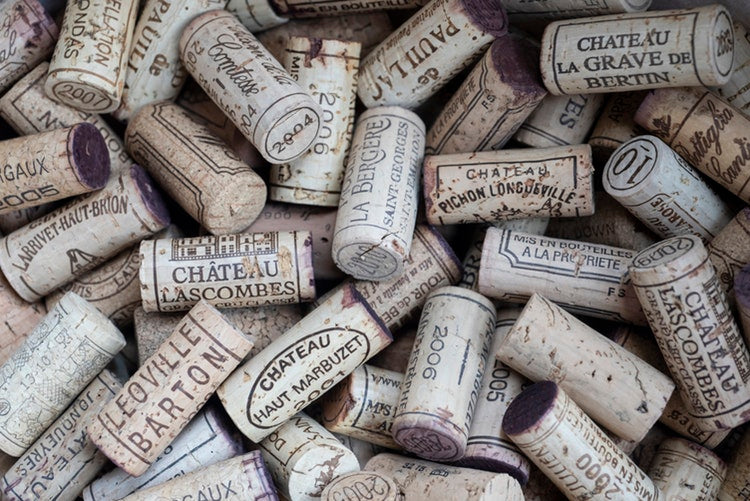
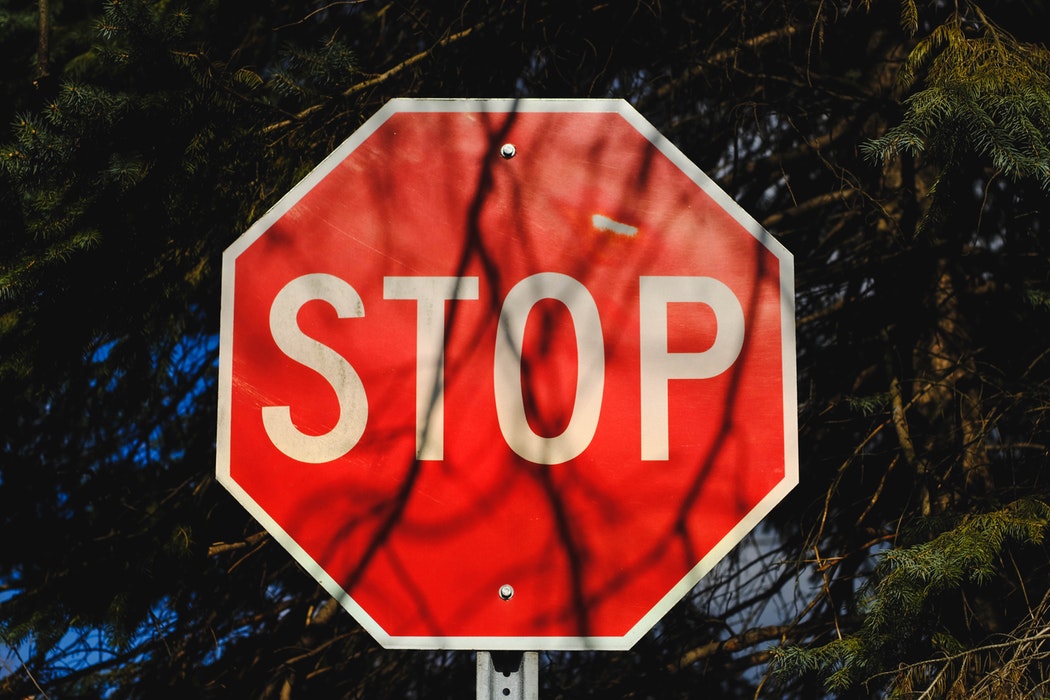
Leave a comment
This site is protected by hCaptcha and the hCaptcha Privacy Policy and Terms of Service apply.